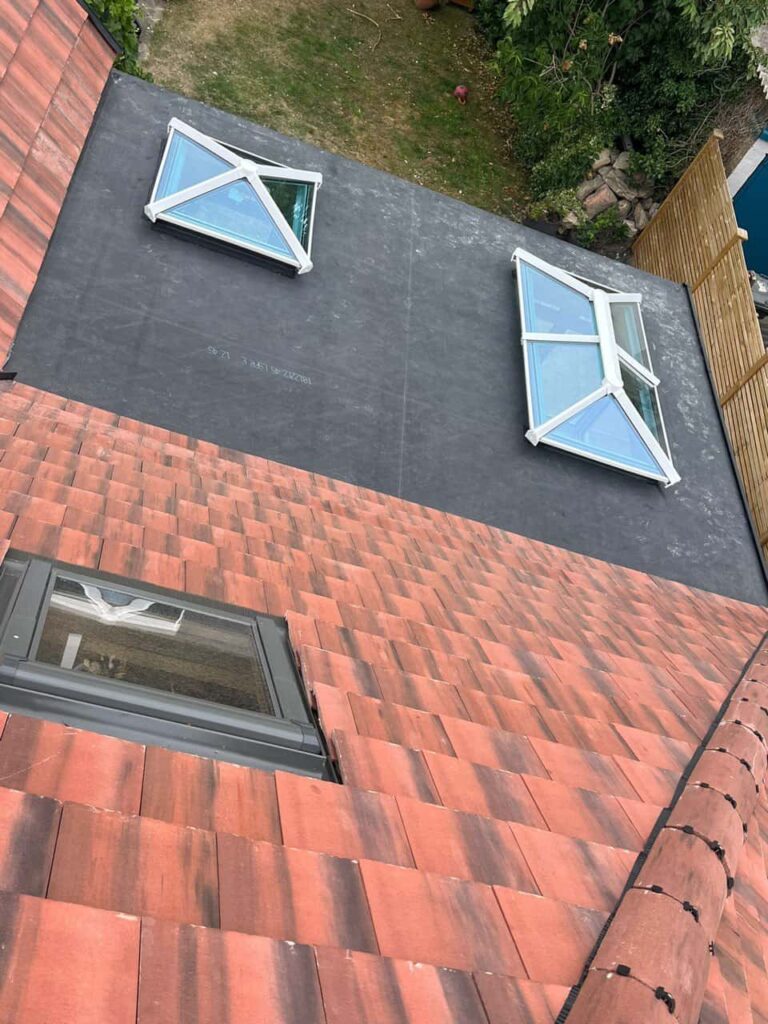Introduction
A leaking roof can be a nuisance — no one likes water spots on the ceiling or the dreaded drip during a rainstorm. But sometimes, a leak is more than just a leak. What appears to be a minor inconvenience can, in fact, be the symptom of deeper structural problems. For homeowners in Biggin Hill and the wider South East London area, recognising these signs early could save thousands of pounds in future damage — and potentially ensure the safety of everyone under that roof.
At Biggin Hill Roofing Repairs, we’ve seen it all — from straightforward leak patches to major structural failures that started as ‘just a small drip’. This article will walk you through the telltale signs that something more serious might be going on, and why timely professional inspection is crucial.
When a Leak Suggests More Than Just Roof Damage
Leaks happen. Roofs take the brunt of British weather all year round, and even the best ones wear over time. However, some leaks come with extra red flags that shouldn’t be ignored.
Here are a few warning signs that could point to underlying structural concerns:
- Sagging sections of roofline
- Cracks appearing in ceilings or internal walls
- Persistent mould or damp patches in unusual places
- Doors and windows becoming difficult to open
- Visible bowing or unevenness in the roof
These aren’t just signs of wear — they often suggest shifts or stress in the underlying framework of your home.
Common Structural Culprits Behind Roof Leaks
Damaged Roof Trusses or Rafters
The trusses and rafters form the skeleton of your roof. If these are compromised — whether through rot, water ingress, or pest damage — the roof can start to sink or twist. Even minor leaks can accelerate the breakdown of timber framing, eventually leading to dangerous instability.
At Biggin Hill Roofing Repairs, we frequently uncover hidden wood rot caused by slow, undetected leaks. In these cases, the problem isn’t the roofing felt or tiles — it’s what lies beneath.
Shifting or Settling Foundations
It might sound surprising, but a problem with your foundation can affect your roof. When a building’s base shifts due to soil movement or poor drainage, it can cause the whole structure to twist. This tension may show up in the roof as cracked tiles, buckled flashing, or gaps around the chimney.
Structural shifting may also cause internal cracking or misalignment of door frames — things that many homeowners chalk up to age, but which could signal bigger issues.
Excessive Weight or Load on the Roof
Roofs are designed to carry weight, but not indefinitely. Accumulated debris, poorly installed solar panels, or even heavy snow loads can place long-term stress on the structure. Over time, this may cause sagging or joint separation.
You might notice this from inside your loft as bowed beams, or from outside as dips in the roofline. Either way, it’s a structural issue that goes beyond a simple leak.
How to Distinguish Superficial Leaks from Serious Issues
Location and Pattern of the Leak
A leak located in the same spot every time it rains could simply be a failed flashing or cracked tile. But if the leak seems to migrate, or appears in multiple locations, it may be a sign that the water is travelling through weakened structural areas.
Speed of Onset
Sudden leaks after a storm can suggest wind damage or tile displacement. But slow-forming leaks that develop stains over months may indicate water infiltration deep into your home’s structure.
Associated Structural Symptoms
If a leak comes hand-in-hand with creaking floors, sagging ceilings, or visible movement in the roof ridge, it’s time to get a professional involved. These are not surface-level problems and may need urgent structural support.
Why Early Detection Matters
Structural issues are a bit like tooth decay — by the time you feel pain, the damage is already extensive. Leaving a minor-looking problem to fester can compromise the safety and integrity of your entire home. And when it comes to roofs, what starts small rarely stays that way.
By identifying problems early and calling in experienced roofers like Biggin Hill Roofing Repairs, you’re not just patching a leak — you’re safeguarding your home for years to come.
What We Do at Biggin Hill Roofing Repairs
We don’t just look for surface damage. Our trained team takes a comprehensive approach, inspecting:
- Roof structure integrity
- Rafter and beam condition
- Signs of internal and external movement
- Long-term moisture effects
- Possible foundation-related tension
Whether your issue is a simple leak or a more serious structural concern, we’re equipped to handle it quickly, safely, and professionally — minimising disruption while ensuring maximum peace of mind.
Conclusion
Not all roof leaks are created equal. Some are surface-level nuisances; others are distress signals from the very framework of your home. The key lies in spotting the difference — and acting swiftly when red flags appear.
If you’re based in Biggin Hill or the South East London area and suspect your roof might be telling you something more serious, don’t wait. Biggin Hill Roofing Repairs is here to provide expert assessments and solutions that go beyond just patching things up. Protect your property, your family, and your investment by ensuring that small leaks don’t grow into major structural problems.
Call us on: 01959 582 996
Click here to find out more about Biggin Hill Roofing Repairs
Click here to complete our contact form and see how we can help with your roofing needs.

